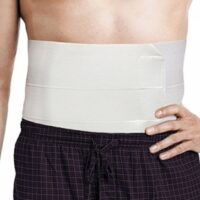Back Exercises
Article by John Miller
Back Exercises
How to Safely Strengthen Your Back

Why Strengthen Your Back?
Back pain can severely affect your daily life, making even simple tasks challenging. Strengthening your back through proper exercises can relieve pain and prevent future injuries. It’s essential to approach this with the right guidance to ensure safety and effectiveness.
How to Strengthen Your Back Safely?
A physiotherapist’s guidance is crucial in developing a safe and effective exercise routine. They tailor your plan to meet your specific needs and physical limitations. This ensures that exercises are both beneficial and safe, preventing further injury.
Who Should Consider Back Exercises?
Anyone experiencing back pain or discomfort should consider back exercises. Additionally, those looking to prevent future back issues can benefit from a structured exercise plan. Whether you’re recovering from an injury or seeking to enhance your overall back health, a personalised program can make a significant difference.
Where Can You Start?
Begin your journey with gentle, low-impact exercises. These initial exercises should focus on stretching and simple movements that boost blood flow to back muscles. This helps ease stiffness and pain, laying a foundation for more advanced exercises.

When to Progress?
As your back gains strength and flexibility, your physiotherapist will introduce more challenging exercises. This progression is crucial for building a resilient back. Core strengthening exercises, posture improvements, and stability exercises come into play at this stage.
What Exercises to Include?
Start with gentle exercises and progress to core strengthening and functional exercises. Advanced stages may include exercises that simulate daily activities or sports movements. These exercises not only alleviate pain but also help in preventing future injuries.
New Research
Recent studies highlight the effectiveness of targeted back exercises in relieving pain and preventing future issues. Systematic reviews and peer-reviewed articles stress the importance of a personalised approach. For instance, a recent review found in the Journal of Orthopaedic & Sports Physical Therapy that tailored back exercise programs significantly reduce pain and improve functionality. Most exercise interventions provided benefits for managing pain and disability in chronic lower back pain (LBP). However, the most effective programs included: (1) 1 to 2 weekly sessions of Pilates or strength exercises; (2) core-based, strength, or mind-body exercise sessions lasting less than 60 minutes; and (3) training programs spanning 3 to 9 weeks focusing on Pilates and core exercises. This reinforces the need for professional guidance in designing and progressing your exercise plan. (Fernández-Rodríguez2022)
Conclusion
Strengthening your back with a structured exercise program under the guidance of a physiotherapist can dramatically improve your life. Patience and consistency are key to success. By following a tailored plan, you can achieve a stronger, healthier back and enjoy a pain-free life.
What to Do Next?
If you’re experiencing back pain or want to strengthen your back, consult a physiotherapist. They can create a personalised exercise program to suit your needs. For more information and to find a qualified professional, visit our Physiotherapists page.
For further insights and up-to-date research on back exercises, explore our articles on ultrasound-guided back exercises and other targeted back strengthening strategies.
Rochedale - Call 38410277
Book Online: RochedaleSalisbury - Call 32751044
Book Online: SalisburySandgate - Call 32691122
Book Online: SandgateBack Exercises Examples
Legal Disclaimer
Before commencing any exercise program, consult your physiotherapist to reduce the risk of injury. This ensures that your exercises are safe and tailored to your individual needs.
Where to Potentially Start?
To get started, here are a few examples of back exercises that can help strengthen your back and alleviate pain:
- Cat-Cow Stretch:
- Start on your hands and knees.
- Arch your back (like a cat) and then dip your back (like a cow).
- Repeat slowly and gently for a few minutes.
- Pelvic Tilts:
- Lie on your back with knees bent and feet flat on the floor.
- Flatten your back against the floor by tightening your abdominal muscles and tilting your pelvis.
- Hold for a few seconds and then release. Repeat several times.
- Bridges:
- Lie on your back with knees bent and feet flat on the floor.
- Lift your hips towards the ceiling while keeping your shoulders on the ground.
- Hold for a few seconds and lower back down. Repeat multiple times.
- Bird-Dog:
- Start on your hands and knees.
- Extend one arm forward and the opposite leg back, keeping your back straight.
- Hold for a few seconds and switch sides. Repeat several times.
Pilates, Core Exercises, and Resistance Training
Pilates for a Stronger Back
Pilates is a highly effective exercise method for strengthening the back. It focuses on controlled movements and improving posture. Key Pilates exercises for the back include:
- The Hundred:
- Lie on your back with knees bent.
- Lift your head, neck, and shoulders off the mat, and extend your arms parallel to the floor.
- Pump your arms up and down while inhaling for five counts and exhaling for five counts. Repeat ten times.
- Swan:
- Lie face down with arms bent and palms under your shoulders.
- Lift your upper body off the mat, extending your back.
- Hold for a few seconds and then lower back down. Repeat several times.
Core Exercises for Back Strength
A strong core supports your back and improves overall stability. Incorporating core exercises into your routine can significantly benefit your back health. Some effective core exercises include:
- Planks:
- Start in a push-up position with your forearms on the ground.
- Keep your body straight from head to heels.
- Hold this position for as long as you can, aiming for at least 30 seconds.
- Russian Twists:
- Sit on the ground with your knees bent and feet flat.
- Lean back slightly, keeping your back straight.
- Hold a weight or a medicine ball and twist your torso from side to side.
- Leg Raises:
- Lie on your back with legs extended.
- Lift your legs towards the ceiling while keeping them straight.
- Lower them back down slowly without letting them touch the ground. Repeat multiple times.


Resistance Training for Back Health
Resistance training is another excellent way to strengthen your back. Using weights or resistance bands can enhance muscle strength and endurance. Effective resistance training exercises for the back include:
- Deadlifts:
- Stand with feet hip-width apart and a barbell on the ground.
- Bend at your hips and knees to grab the barbell.
- Lift the barbell by straightening your hips and knees, keeping your back straight.
- Rows:
- Hold a dumbbell in each hand with a slight bend in your knees.
- Bend at your waist and let your arms hang straight down.
- Pull the dumbbells towards your waist while squeezing your shoulder blades together.
- Lat Pulldowns:
- Sit at a lat pulldown machine and grab the bar with a wide grip.
- Pull the bar down towards your chest, squeezing your shoulder blades together.
- Slowly return to the starting position. Repeat multiple times.
Rochedale - Call 38410277
Book Online: RochedaleSalisbury - Call 32751044
Book Online: SalisburySandgate - Call 32691122
Book Online: SandgateBack Exercises FAQs
- What are the best exercises to strengthen your back? The best exercises for back strength include gentle stretches, core strengthening, and functional movements.
- How often should I do back exercises? Frequency depends on your condition and goals. Generally, a few times a week under professional guidance is effective.
- Can back exercises relieve pain? Yes, targeted back exercises can significantly reduce pain and improve mobility. Learn how specific exercises can alleviate back pain.
- Are there any risks with back exercises? Without proper guidance, there’s a risk of injury. Consulting a physiotherapist ensures your exercises are safe and effective. They will help you to discover how to exercise safely.
- What should I avoid when doing back exercises? Avoid high-impact or strenuous exercises initially. Gradually progress under professional supervision. Safe exercise practices will minimise future injuries.
- Can physiotherapists help with back exercises? Absolutely. Physiotherapists provide tailored exercise plans and monitor your progress. Learn about the benefits of physiotherapist-guided exercises. Boom a personal assessment and exercise prescription suitable to you, your interests and goals, plus your body.
Related Articles
- Core Stability Training For Effective Low Back Pain Relief: Readers will learn about the benefits of core stability training in reducing low back pain and improving quality of life.
- Pilates for Back Pain: This article discusses how Pilates can aid in managing back pain by strengthening core muscles and enhancing spinal health.
- Lower Back Pain – Understanding & Managing – Physio Tips: Offers insights into how deep core muscles support the lower back and pelvis, highlighting the connection between back pain and core muscle functionality.
- Core Exercises For Lower Back Pain Relief: Focuses on the role of core exercises in helping alleviate lower back pain by supporting and maneuvering the lower back and pelvis.
- Back Pain Prevention: Essential Tips From A Physiotherapist: Explores exercises for strengthening and relaxing back muscles, focusing on flexibility, strengthening, and postural control.
- Effective Back Pain Exercise Routines For Pain Relief Guide: Provides a comprehensive guide to exercises that can relieve back pain, including posture improvement and spinal alignment routines.
- Back Exercises And Core Strength: Physio Insights: Offers insights into developing a resilient back through core strengthening, improving posture, and enhancing overall back stability.
- Gym Back Exercises: Strengthening & Pain Prevention: Discusses gym exercises that target the back, including deadlifts and rows, with tips for proper form to prevent pain.
- Back Pain: Causes, Treatments, Remedies And Preventions: Provides an overview of common causes of back pain and various treatment options, including physiotherapy recommendations.
- Sudden Back Pain Explained: Causes & Physiotherapy Solutions: Examines the most prevalent causes of sudden back pain and offers guidance on seeking physiotherapy solutions.
- Ultrasound-Guided Back Exercises – Learn about the benefits of precise exercise targeting.
- Posture Improvement – Tips on how to improve your posture.
- Alleviate Back Pain – Techniques to reduce back pain.
- Mayo Clinic: Back Exercises – Explore various suggestions.














































































